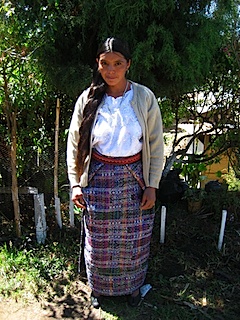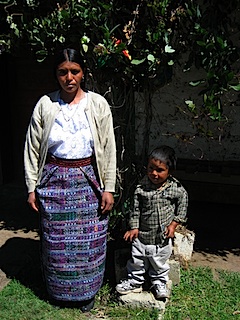 Photography is a funny thing in Guatemala. In lots of rural places, taking photos of the locals can be downright dangerous. Some of them think that the photo might steal their soul, but the bigger concern is that they often think that you are taking a picture so you can show it around in the US to decide which children would be the best to steal. This is no laughing matter; a few years ago a tourist got stoned to death for picking up a kid in a rural Guatemalan town, because they misunderstood his motives. As odd as this fear sounds, it’s not without some base in truth: there are hundreds of documented cases of women being forced to give up their kids for adoptions, or Guatemalans robbing other Guatemanlans of their kids to forge their papers and place them in adoption agencies (receiving a finder’s fee, of course). It’s a nasty mess, and something we have to be careful about.
Photography is a funny thing in Guatemala. In lots of rural places, taking photos of the locals can be downright dangerous. Some of them think that the photo might steal their soul, but the bigger concern is that they often think that you are taking a picture so you can show it around in the US to decide which children would be the best to steal. This is no laughing matter; a few years ago a tourist got stoned to death for picking up a kid in a rural Guatemalan town, because they misunderstood his motives. As odd as this fear sounds, it’s not without some base in truth: there are hundreds of documented cases of women being forced to give up their kids for adoptions, or Guatemalans robbing other Guatemanlans of their kids to forge their papers and place them in adoption agencies (receiving a finder’s fee, of course). It’s a nasty mess, and something we have to be careful about.
However, in our town, they all know us and have decided we’re mostly harmless. You might have noticed we have a lot of pictures in our blog; if we want to take pictures, we ask first, and nowadays they get downright excited about it. For some, it’s the novelty of being photographed. Others want to get a copy (which we usually provide, as a thank-you for letting us get a great picture). The village elders encourage it because they they feel like if they get more stateside exposeure, it increases their chance of getting some international aid. That’s probably a good bet.
This has all had a peculiar, somewhat undesireable side effect. We are now the de-facto “village photographers.” We have a camera, know how to take good pictures, and pass by the photo lab in Huehuetenango every month or so during our travels. In order to keep it under control, we had to set ground rules early on:
1) We need to be paid up front. We just pass our cost on, we don’t mark up. Peace Corps doesn’t allow side businesses. I occasionally think we should charge extra, then use the profits to do a community project. The jury is still out on this one.
2) It needs to be kept on the down-low, so we don’t get swamped with requests.
3) We won’t do it if we have “real” work we’re supposed to be doing at the time.
So what do Guatemalans want with all these pictures? Well, some of it is the normal stuff: our neighbors wanted pictures of their grandkids in the county parade, things like that. But most of it is women and their tiny children, dressed up in their finest traditional garb, taking pictures to send back to their husbands who have been working illegally in the US for the last few years. I guess they don’t want their husbands to be lonely. Maybe they hope the pictures will make them come back? The whole thing is a bit creepy.
And funny. Funny, because Guatemalans have some strange cultural hangups about photos that I’ve never heard of before. The firt one that got us is that they DEMAND that the entire body be visible. Waist-up glamshots are a nonstarter. I took a few like that early on, and the family was baffled as to why I didn’t know how to work the camera correctly, to get their entire body. I was even shown how to use the viewfinder. Hah! The second oddity is that Guatemalans don’t like to smile in photos. And, no, it’s not like American middleschool girls who are shy in front of the camera. Guatemalans are all business during a shoot, so I joke with them, make stupid faces, etc. until they smile, and take a few that way too when they are off-guard. But then when we review them, they tell me to erase any that have smiles. If other family members are around, everyone makes fun of the ones with smiles, as though the person were naked or something. Bizarre.
I think of the resulting pictures as “American Gothic“. Here we have have two pictures of Lena, a neighbor. They’re for her husband in the US. The one on the left is quite nice, I think. She hated it. The one in the right is, well, creepy. That is the one she’s sending.
Now you know a little bit about photography in Guatemala. Jim T., Mike G. and Tom F. I think of you guys all the time here.

